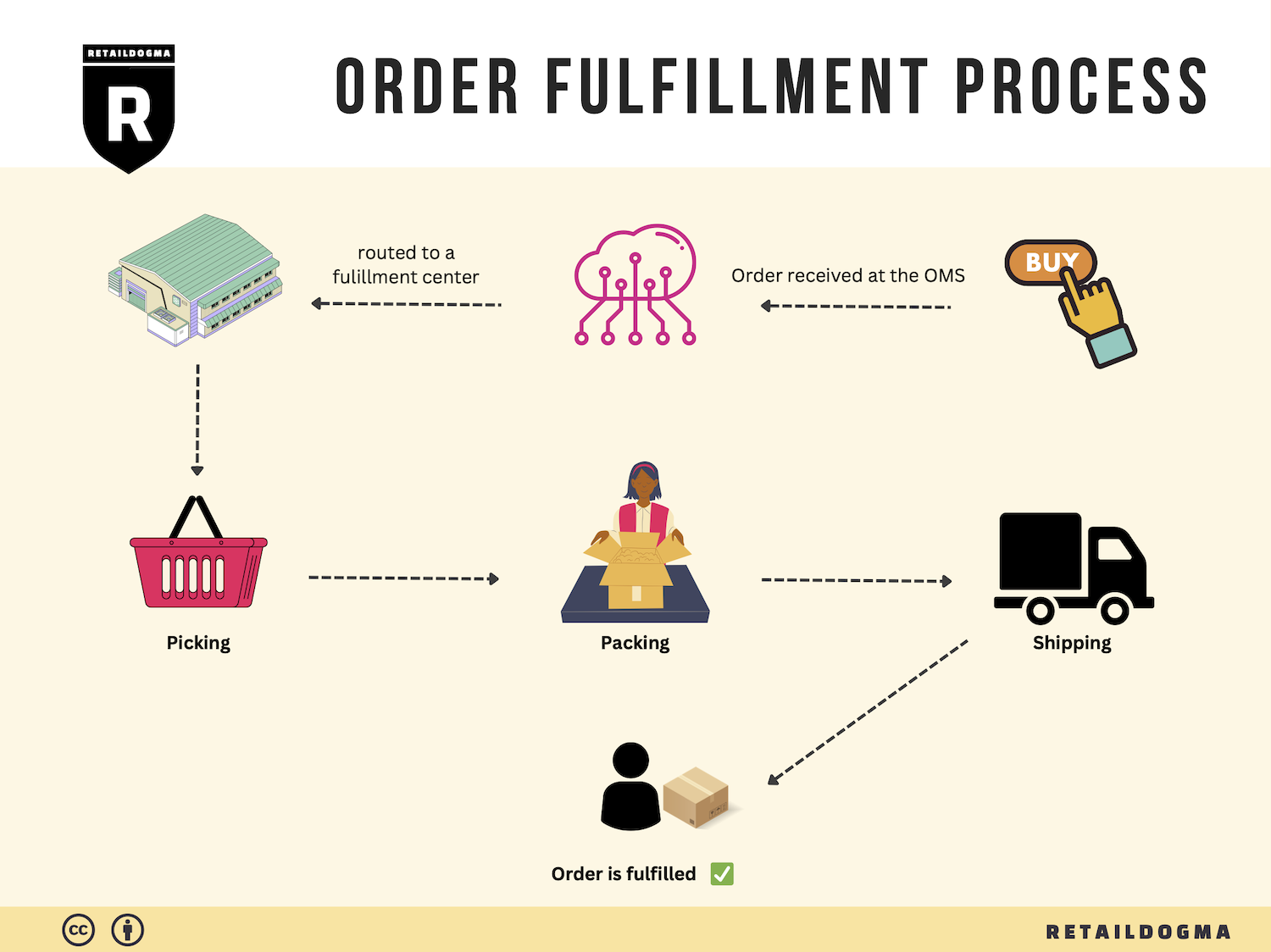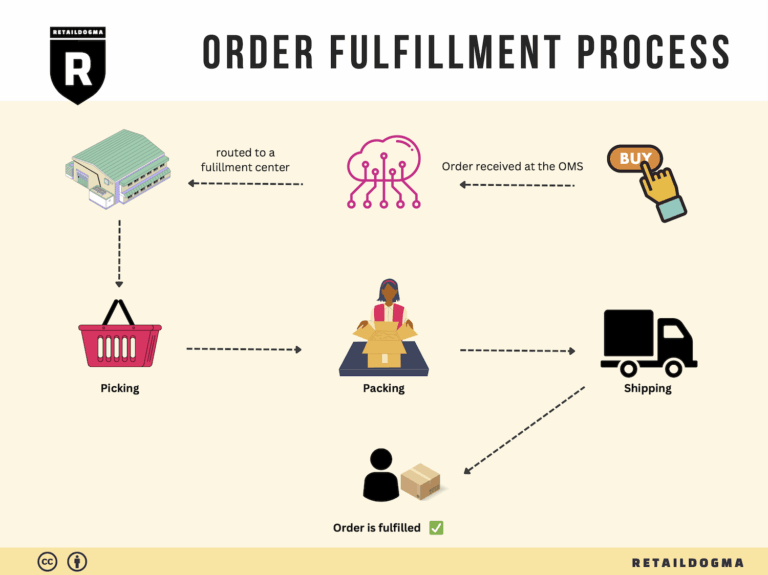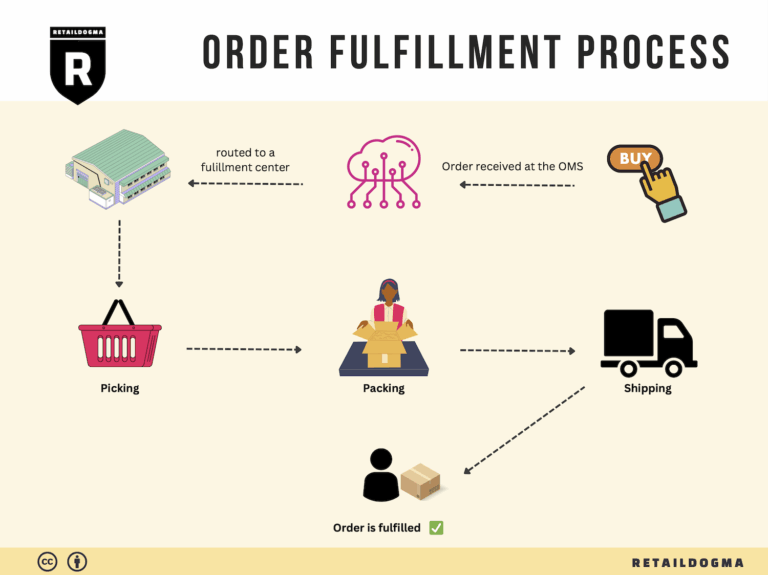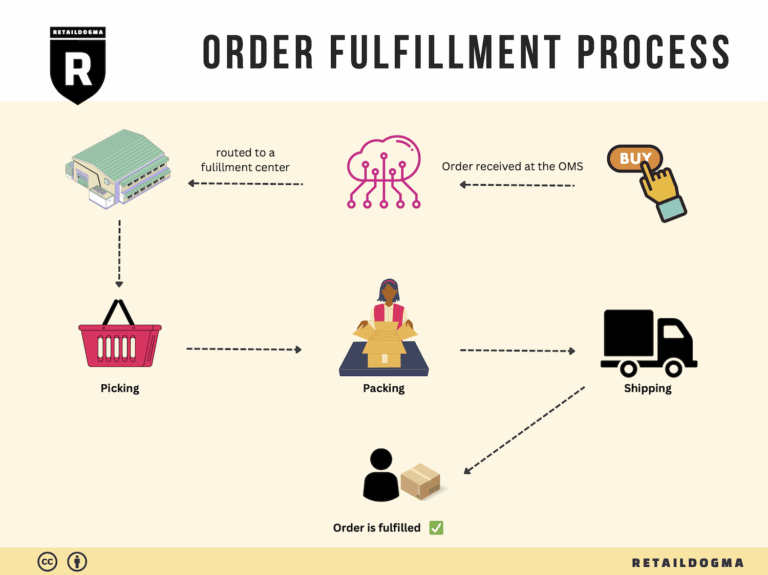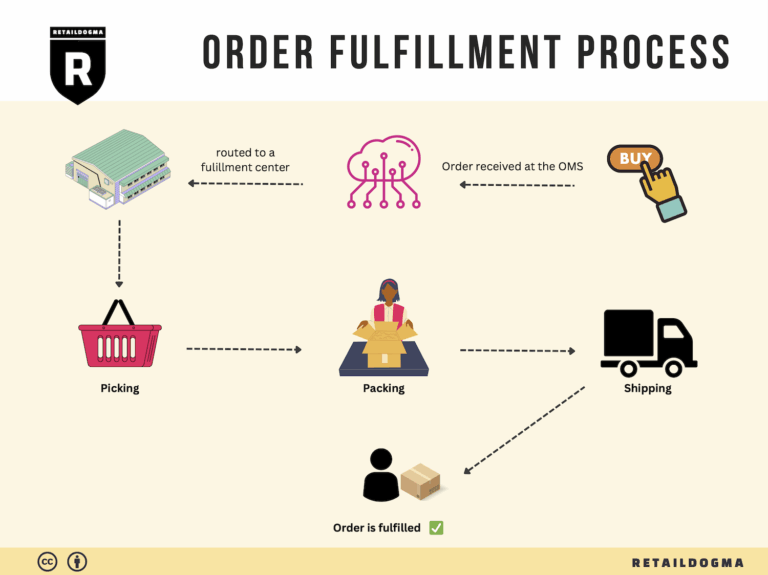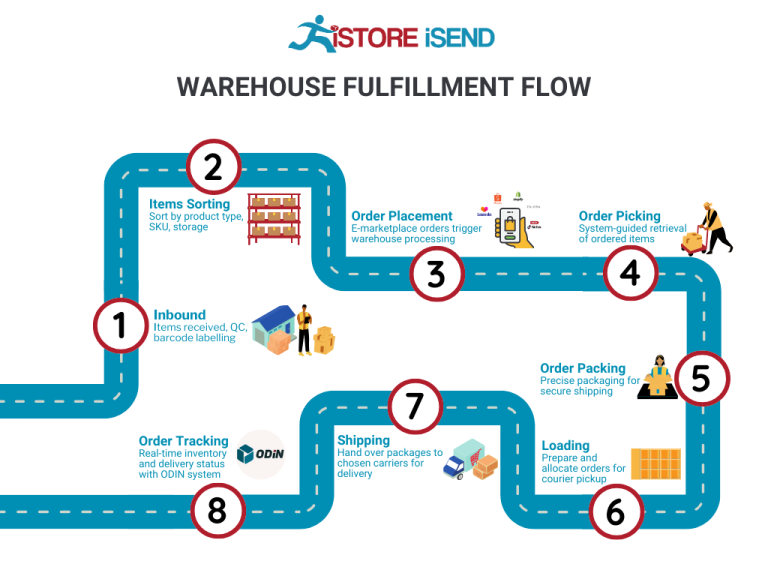Ecommerce Fulfillment Services: The Ultimate Guide (2025)
What is E-commerce Fulfillment? An Introduction for Growing Businesses
Understanding the Challenges of E-commerce Fulfillment
For many growing online businesses, the excitement of increasing sales often comes with a daunting challenge: the complexity of packing and shipping orders. As your business expands, the manual processes of fulfillment can become overwhelming, leading to errors, delays, and ultimately dissatisfied customers. This is where effective e-commerce fulfillment comes into play.
At its core, fulfillment is the process of getting a product from your inventory to your customer’s doorstep. It encompasses everything from receiving orders, picking and packing items, to shipping and handling returns. In an increasingly competitive e-commerce landscape, mastering fulfillment is crucial for maintaining customer satisfaction and fostering repeat business.
What This Guide Will Cover
In this guide, we will delve into the various aspects of e-commerce fulfillment tailored for businesses looking to scale their operations. We will explore different fulfillment models, including:
- Third-Party Logistics (3PL): Utilizing external partners to handle warehousing, packing, and shipping.
- Fulfillment by Amazon (FBA): Leveraging Amazon’s vast logistics network to fulfill orders efficiently.
We will also outline the core services involved in fulfillment, such as inventory management, order processing, and shipping solutions. Understanding these services will help you identify what your business needs to streamline operations and improve customer experience.
Choosing the Right Fulfillment Partner
Selecting a fulfillment partner is a critical decision that can significantly impact your business’s efficiency and growth. This guide will provide practical tips on what to consider when evaluating potential partners, including their capabilities, technology, customer service, and scalability.
Pricing Considerations
Understanding pricing structures in fulfillment is essential for budgeting and managing costs effectively. We will break down common pricing models, including storage fees, pick-and-pack fees, and shipping costs, enabling you to make informed financial decisions.
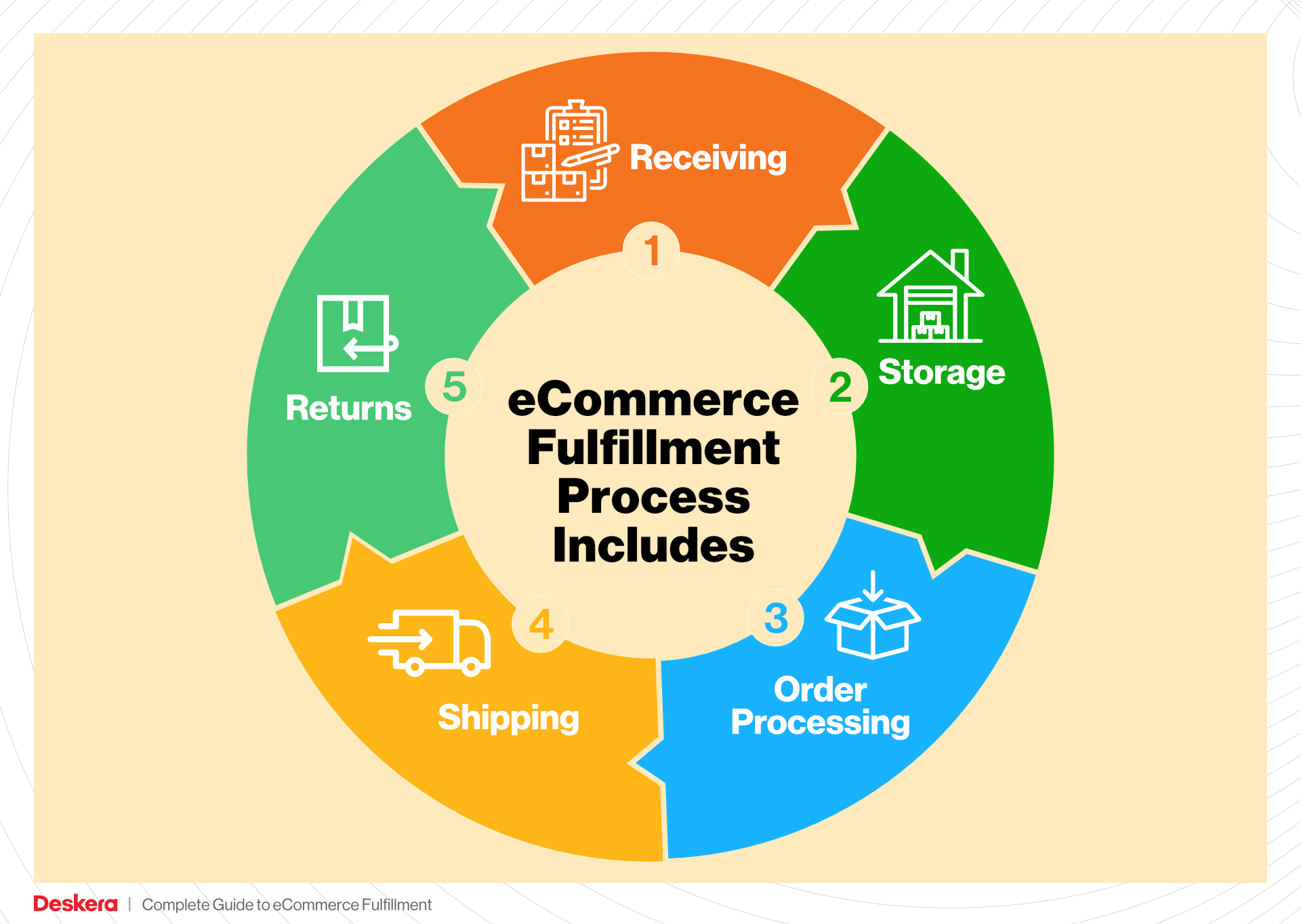
Empowering Your Business
The ultimate goal of this guide is to empower e-commerce businesses to make smart, strategic decisions about their logistics. By understanding the intricacies of fulfillment, you can optimize your operations, reduce overhead, and enhance customer satisfaction, paving the way for sustainable growth. Whether you are new to e-commerce or looking to refine your existing processes, this guide will serve as a valuable resource on your fulfillment journey.
What You’ll Learn In This Guide
- What is E-commerce Fulfillment? An Introduction for Growing Businesses
- The Order Fulfillment Process: From ‘Buy’ Button to Customer’s Door
- Comparing Fulfillment Models: In-House vs. 3PL vs. Dropshipping
- A Deep Dive into Amazon FBA: Pros, Cons, and Who It’s For
- Core Services Offered by Fulfillment Centers
- How to Choose a Fulfillment Partner: A 6-Point Checklist
- Understanding Fulfillment Pricing: A Breakdown of Common Fees
- Frequently Asked Questions (FAQs) about Fulfillment
- Conclusion: Is Outsourcing Fulfillment the Right Move for Your Business?
- Important Disclaimer
The Order Fulfillment Process: From ‘Buy’ Button to Customer’s Door
1. Receiving Inventory
The first step in the order fulfillment process begins with receiving inventory. When products arrive at your fulfillment center, they are checked against the purchase orders to ensure accuracy. This process involves inspecting items for quality, counting them, and confirming that they match the expected quantities and specifications.
Importance: Proper receiving is crucial as it sets the foundation for the entire fulfillment process. Mistakes at this stage can lead to stock discrepancies, fulfillment delays, and ultimately, customer dissatisfaction. Efficient receiving procedures can help reduce errors and enhance inventory accuracy.
Key Term: SKU (Stock Keeping Unit) – A unique identifier for each product that helps track inventory levels, manage stock, and streamline the receiving process.
2. Warehouse Storage
Once the inventory has been received and verified, the next step is warehouse storage. This involves organizing products in a manner that optimizes space and facilitates easy access. Items are typically stored in designated locations, often categorized by product type, size, or sales velocity.
Importance: Effective warehouse storage is essential for maximizing efficiency in order fulfillment. A well-organized warehouse minimizes the time spent locating products and helps reduce picking errors, ensuring that orders are processed quickly and accurately.
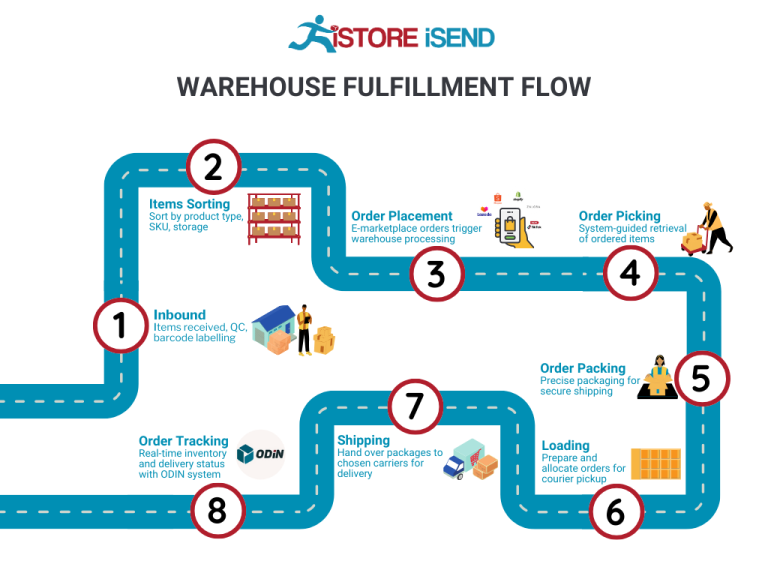
Key Term: FIFO (First In, First Out) – An inventory management method that ensures older stock is sold before newer stock, which is particularly important for perishable goods or items with expiration dates.
3. Order Picking
Order picking is the process of retrieving items from the warehouse to fulfill customer orders. This step is executed using a pick list, which details the items and quantities needed for each order. Depending on the volume of orders and warehouse layout, various picking methods can be employed, such as single order picking, batch picking, or zone picking.
Importance: The efficiency of the picking process directly impacts the speed and accuracy of order fulfillment. Streamlined picking procedures can lead to faster turnaround times, which is critical in today’s e-commerce environment where customers expect rapid delivery.
Key Term: Pick List – A document or digital tool that guides warehouse staff in selecting the correct items from inventory, including their locations, quantities, and any special instructions.
4. Order Packing
Once items are picked, the next stage is order packing. This involves carefully packing the products into appropriate shipping containers. During this process, quality checks are performed to ensure that the right items are included and that they are adequately protected for transit.
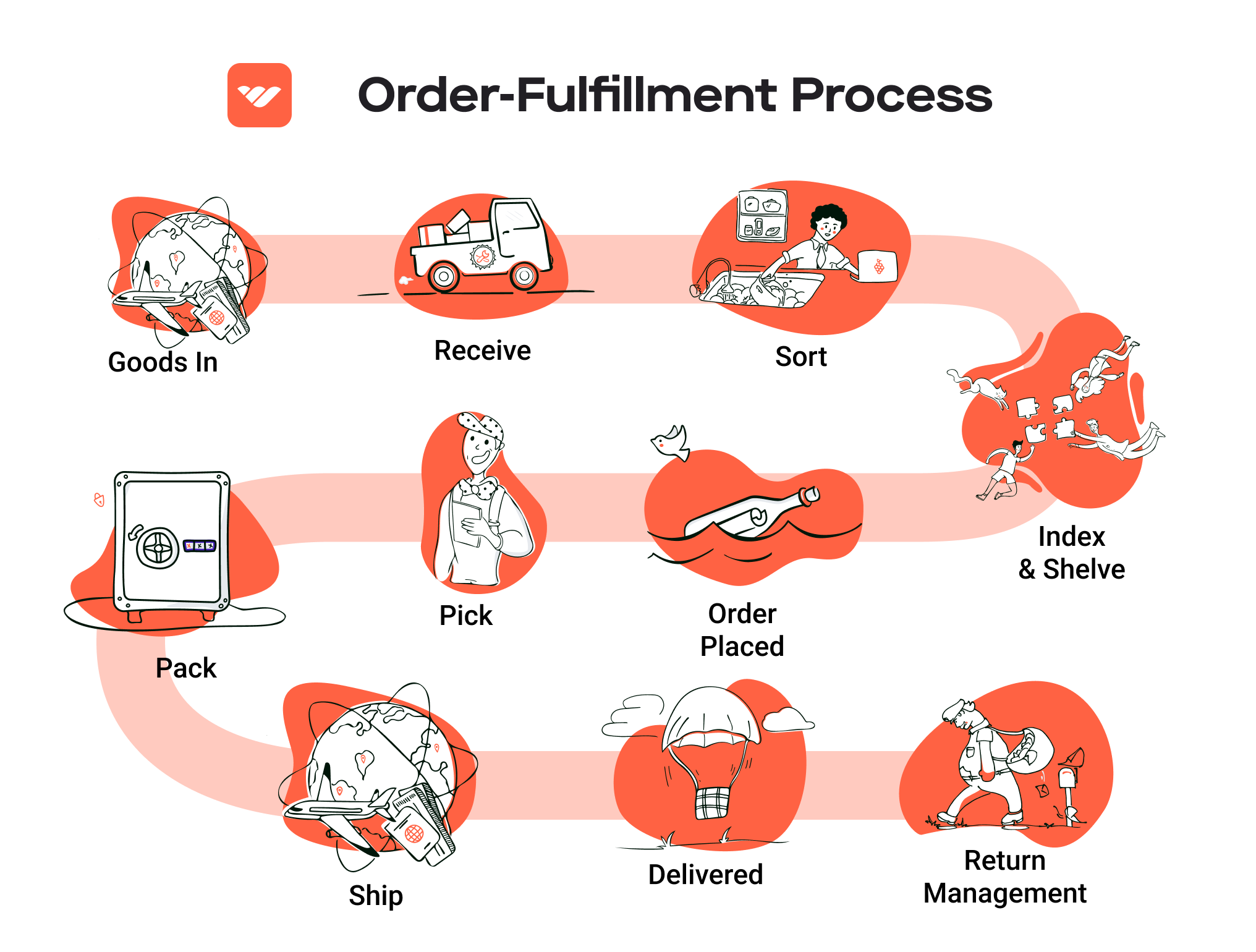
Importance: Packing is vital to prevent damage during shipping and to enhance the customer experience. A well-packed order reflects the brand’s professionalism and can lead to repeat business. Additionally, accurate packing helps minimize returns and loss due to damage.
Key Term: Packing Slip – A document included in the package that lists the items enclosed, serving as a confirmation for the customer and a reference for inventory management.
5. Shipping & Delivery
The final step in the fulfillment process is shipping and delivery. Once orders are packed, they are labeled and dispatched using the most efficient shipping methods. This step often involves selecting carriers based on cost, delivery speed, and reliability. Tracking information is typically provided to customers to keep them informed about their order’s status.
Importance: Timely and accurate shipping is critical to customer satisfaction. It ensures that customers receive their orders as promised, which is a significant factor in retaining business and building loyalty. Additionally, effective shipping management can help reduce costs and improve overall operational efficiency.
Key Term: Multi-Carrier Shipping – A strategy that involves using multiple shipping carriers to optimize shipping costs and delivery times, allowing businesses to choose the best option for each order.
By understanding and optimizing each step of the order fulfillment process, e-commerce businesses can enhance their operational efficiency, improve customer satisfaction, and ultimately scale their operations successfully.
Comparing Fulfillment Models: In-House vs. 3PL vs. Dropshipping
Fulfillment Model Comparison
| Model | Who Handles Inventory | Best For (Business Stage) | Key Advantage | Key Disadvantage |
|---|---|---|---|---|
| In-House Fulfillment | The e-commerce business | Established businesses | Full control over inventory and processes | High overhead costs and labor intensity |
| Third-Party Logistics (3PL) | Third-party provider | Growing businesses | Scalability and expertise in logistics | Less control over fulfillment operations |
| Dropshipping | Supplier or manufacturer | Startups and low-risk businesses | Low upfront investment and risk | Lower profit margins and dependency on suppliers |
In-House Fulfillment
In-house fulfillment refers to the process where an e-commerce business manages its own inventory and fulfillment operations. This model is typically adopted by established companies that have the resources and infrastructure to handle logistics internally. The key advantage of in-house fulfillment is the complete control it provides over the inventory management process, order accuracy, and customer service. Businesses can tailor their fulfillment processes to meet specific needs, ensuring that they can maintain high standards for packaging and shipping.
However, in-house fulfillment comes with significant challenges. The costs associated with warehousing, staffing, and technology can be substantial, particularly for smaller businesses or those just starting. Additionally, managing fulfillment operations can be labor-intensive and distract from the core business activities, such as marketing and product development. As sales volumes increase, businesses may find it difficult to scale their operations efficiently without incurring additional costs.
Third-Party Logistics (3PL)
Third-party logistics (3PL) providers, like Sisk Fulfillment Services, offer comprehensive logistics services that include inventory management, warehousing, order fulfillment, and shipping. This model is ideal for growing businesses that need to scale their operations without the burden of managing logistics in-house. By partnering with a 3PL provider, businesses can leverage the expertise and infrastructure of a logistics specialist, allowing them to focus on their core competencies, such as product development and customer engagement.
One of the primary advantages of using a 3PL provider is the scalability it offers. As a business grows, a 3PL can easily adjust to changing order volumes and provide additional services as needed, such as returns management or custom kitting. However, the downside is that businesses may have less control over their fulfillment processes. Relying on a third party can lead to potential communication issues or discrepancies in service quality. Therefore, it’s crucial to choose a reputable 3PL partner with a proven track record in your industry.
Dropshipping
Dropshipping is a fulfillment model where the e-commerce retailer does not keep products in stock. Instead, when a customer places an order, the retailer purchases the item from a third-party supplier, who then ships it directly to the customer. This model is particularly attractive for startups and businesses looking to minimize upfront investments and risks associated with inventory management.
The primary advantage of dropshipping is its low barrier to entry, allowing entrepreneurs to start an online business without the need for significant capital to purchase inventory. It also enables businesses to offer a wide range of products without the complexities of managing stock levels. However, dropshipping comes with its challenges, such as lower profit margins and reliance on suppliers for product quality and shipping times. Since the retailer does not handle the products directly, any issues with the supplier can reflect poorly on the retailer’s brand, leading to potential customer dissatisfaction. As such, it’s essential for dropshippers to carefully vet their suppliers and maintain open communication to ensure a smooth fulfillment process.
A Deep Dive into Amazon FBA: Pros, Cons, and Who It’s For
Understanding Fulfillment by Amazon (FBA)
Fulfillment by Amazon (FBA) is a service offered by Amazon that allows sellers to store their products in Amazon’s fulfillment centers. Amazon then takes care of the storage, packaging, and shipping of these products directly to customers. Sellers benefit from Amazon’s vast logistics network, customer service, and the ability to leverage Amazon Prime’s fast shipping options. This service can significantly simplify the logistics of running an e-commerce business, especially for those looking to scale.
How FBA Works
-
Setting Up an Account: Sellers start by creating an Amazon seller account and enrolling in FBA.
-
Product Listing: After listing their products, sellers send their inventory to Amazon’s fulfillment centers. Each product is tagged with a unique barcode, which helps track inventory.
-
Storage and Management: Amazon stores the products in its warehouses and manages inventory levels. Sellers can monitor their inventory through the seller dashboard.
-
Order Fulfillment: When a customer orders a product, Amazon picks, packs, and ships the item on behalf of the seller. They also handle customer service and returns, providing a seamless experience for both sellers and buyers.
-
Payment Processing: After an order is completed, Amazon processes the payment and transfers the funds (minus fees) to the seller’s account.
Pros of FBA
-
Prime Eligibility: One of the most significant advantages of using FBA is that your products become eligible for Amazon Prime. This status can lead to increased visibility and sales, as Prime members often prefer products with faster shipping options.
-
Customer Trust: Products fulfilled by Amazon benefit from the trust and reliability associated with the Amazon brand. Customers are more likely to purchase items backed by Amazon’s customer service and return policies, reducing the perceived risk of purchasing from third-party sellers.
-
Multi-Channel Fulfillment: FBA allows sellers to fulfill orders from other sales channels (like their own websites or eBay) using Amazon’s infrastructure. This capability enables businesses to streamline their operations and maintain consistent service across multiple platforms.
-
Scalability: FBA handles the logistics of storage and shipping, allowing sellers to focus on other aspects of their business, such as marketing and product development. This can be particularly beneficial for businesses looking to scale quickly without the overhead of a dedicated fulfillment operation.
-
Access to Advanced Tools: Sellers using FBA can take advantage of Amazon’s advanced analytics and reporting tools, which provide insights into sales trends, inventory levels, and customer behavior.
Cons of FBA
-
High Fees: FBA comes with various fees, including storage fees for inventory held in Amazon warehouses and fulfillment fees for each order processed. These costs can accumulate quickly, especially for sellers with low margins or slow-moving inventory.
-
Strict Inventory Rules: Amazon has stringent guidelines regarding inventory management, including requirements for labeling, packaging, and shipping products to their fulfillment centers. Non-compliance can result in additional fees or penalties.
-
Commingling Risks: In FBA, products from different sellers may be stored together, which can lead to commingling of inventory. If a customer receives a product that is defective or not as described, it can negatively impact the seller’s reputation, even if the issue originated from another seller’s inventory.
-
Limited Control Over Shipping: While Amazon manages logistics, sellers have limited control over the shipping process and cannot customize packaging or branding. This can be a drawback for brands focused on delivering a specific customer experience.
-
Dependency on Amazon: Relying heavily on FBA can create a dependency on Amazon’s platform and policies. Any changes in Amazon’s terms of service, fees, or algorithms can significantly impact a seller’s business.
Who is FBA Best For?
Fulfillment by Amazon is particularly well-suited for:
-
Small to Medium-Sized Businesses: Sellers who want to focus on growth without investing heavily in logistics and warehousing will find FBA beneficial. It allows them to leverage Amazon’s infrastructure without the need for extensive operational overhead.
-
Product-Based Businesses: Companies with physical products that require storage and distribution can benefit from FBA’s efficient handling of logistics.
-
E-commerce Startups: Startups looking to enter the market quickly can utilize FBA to establish a presence on Amazon without the complexities of setting up their fulfillment processes.
-
Brands Seeking Prime Access: Businesses that want to tap into the vast Prime customer base will benefit from FBA’s eligibility for faster shipping options.
-
Multi-Channel Sellers: Brands that sell across multiple platforms can streamline their operations by using FBA for order fulfillment from various channels.
In conclusion, FBA presents a valuable opportunity for e-commerce businesses to scale efficiently while leveraging Amazon’s logistics capabilities. However, potential sellers must weigh the benefits against the associated costs and challenges to determine if FBA aligns with their business goals.
Core Services Offered by Fulfillment Centers
Inventory Management & Warehousing
Effective inventory management and warehousing are foundational components of any successful e-commerce operation. Fulfillment centers provide dedicated storage solutions, allowing businesses to maintain optimal stock levels without the burden of managing a physical warehouse themselves. This service includes the systematic organization of inventory, real-time tracking, and detailed reporting on stock levels.
The primary benefit of efficient inventory management is the reduction of overhead costs. By outsourcing warehousing, e-commerce businesses can save on expenses related to rent, utilities, and staffing. Furthermore, fulfillment centers utilize advanced inventory management systems that help prevent stockouts and overstock situations. This ensures that products are available when customers demand them, thereby enhancing customer satisfaction and loyalty. Additionally, with accurate inventory data, businesses can make informed purchasing decisions, ultimately optimizing their supply chain.
Pick and Pack Services
Pick and pack services are critical for e-commerce businesses that require precise order fulfillment. In this process, fulfillment centers handle the picking of individual items from their inventory based on customer orders, and then pack these items securely for shipment. This service often involves the use of automated systems and trained staff to ensure accuracy and efficiency.
The benefits of pick and pack services are manifold. First, they significantly reduce the time it takes to fulfill orders, allowing businesses to offer faster shipping options—a key competitive advantage in the e-commerce landscape. Moreover, fulfillment centers employ quality control measures such as barcode scanning and manual checks to minimize errors, which reduces returns and increases customer satisfaction. By outsourcing this function, e-commerce businesses can focus on core activities like marketing and product development while ensuring that their customers receive the right products on time.
Kitting and Assembly
Kitting and assembly services are invaluable for e-commerce businesses that offer bundled products or promotional kits. Fulfillment centers can assemble various components into a single package, whether it’s a simple gift set or a complex promotional kit. This service includes everything from sourcing and storing components to assembling and preparing the final product for shipment.
The primary advantage of kitting and assembly services is the enhancement of the customer experience. A well-assembled kit can create a memorable unboxing experience that encourages repeat purchases and positive reviews. Additionally, these services help businesses streamline their operations by consolidating multiple SKUs into a single item, simplifying inventory management and reducing storage costs. Furthermore, with expert assembly, businesses can ensure that their products are presented in an appealing and professional manner, which can significantly impact customer perception and brand loyalty.
Returns Management (Reverse Logistics)
Returns management, also known as reverse logistics, is a crucial service offered by fulfillment centers. This process involves handling returned products efficiently, whether due to customer dissatisfaction, defects, or order errors. Fulfillment centers manage the entire returns process, from providing return shipping labels to inspecting returned items and restocking them as needed.
The importance of effective returns management cannot be overstated, especially in the e-commerce sector, where return rates can be significantly higher than traditional retail. A streamlined returns process can enhance customer satisfaction by making it easy for customers to return unwanted items. This responsiveness can foster loyalty and encourage repeat business. Additionally, fulfillment centers can analyze return data to identify trends and potential issues with products, allowing businesses to make informed decisions about inventory and product quality. By outsourcing returns management, e-commerce businesses can focus on growth while maintaining a high level of customer service, ultimately leading to improved profitability.
In conclusion, fulfillment centers offer a comprehensive suite of services designed to streamline operations for e-commerce businesses. From inventory management and pick and pack services to kitting and returns management, partnering with a fulfillment center can significantly enhance operational efficiency, reduce costs, and improve customer satisfaction. By leveraging these services, e-commerce businesses can scale effectively and focus on their core mission of delivering value to their customers.
How to Choose a Fulfillment Partner: A 6-Point Checklist
Location & Warehouse Network
The geographical location of your fulfillment partner is crucial. A strategically located warehouse can significantly reduce shipping times and costs, enhancing customer satisfaction.
-
Why It Matters: Proximity to your target market allows for faster delivery, which is increasingly important in e-commerce. It can also help minimize shipping costs and improve your overall logistics efficiency.
-
Questions to Ask:
- Where are your warehouses located? How does this align with my customer base?
- Do you have multiple locations to support regional shipping?
- How do you manage shipping costs based on warehouse location?
Technology & Integrations
In today’s digital landscape, having a tech-savvy fulfillment partner can make a significant difference. Integration with your e-commerce platform and other systems is essential for smooth operations.
-
Why It Matters: Advanced technology can streamline inventory management, order processing, and shipping. It can also provide real-time tracking and analytics, which are essential for informed decision-making.
-
Questions to Ask:
- What warehouse management systems do you use, and how do they integrate with my existing platforms?
- Can you provide real-time inventory tracking and reporting?
- How do you ensure data security and compliance with relevant regulations?
Specializations (e.g., Cold Storage, Oversized Items)
Different businesses have unique fulfillment needs. Understanding the specializations of a potential partner can help ensure they can handle your specific requirements.
-
Why It Matters: If your products require specific handling—such as temperature control for perishables or special care for oversized items—partnering with a 3PL that has the right facilities and expertise is critical.
-
Questions to Ask:
- What types of products do you specialize in fulfilling?
- Do you have the necessary certifications (e.g., FDA compliance for dietary supplements)?
- How do you manage inventory for specialized products?
Scalability & Capacity
As your business grows, your fulfillment needs will change. It’s important to choose a partner who can scale with you.
-
Why It Matters: A partner with sufficient capacity can accommodate seasonal spikes in demand without compromising service quality. They should be able to quickly adapt to increased order volumes.
-
Questions to Ask:
- What is your current capacity, and how do you handle fluctuations in order volume?
- Can you provide examples of how you have scaled for other clients?
- What are your strategies for managing peak seasons, such as holidays or sales events?
Pricing and Contracts
Understanding the pricing structure and contract terms of your fulfillment partner is essential for budgeting and avoiding unexpected costs.
-
Why It Matters: Transparent pricing and flexible contract terms can help you manage your expenses and avoid financial strain as your business grows.
-
Questions to Ask:
- Can you provide a detailed breakdown of your pricing model (e.g., storage fees, pick-and-pack fees, shipping costs)?
- Are there any hidden fees or long-term commitments in your contracts?
- What is your policy for price increases, and how often do they occur?
Customer Support & Reviews
The quality of customer support can significantly impact your partnership. A responsive and knowledgeable team can help you navigate challenges and ensure smooth operations.
-
Why It Matters: Effective communication and support from your fulfillment partner can prevent issues from escalating and help you maintain a high level of customer satisfaction.
-
Questions to Ask:
- What is your customer support structure? How can I reach you if issues arise?
- Can you provide references or case studies from current or past clients?
- How do you handle customer complaints or order discrepancies?
Conclusion
Choosing the right fulfillment partner is a critical decision that can significantly impact your e-commerce business. By following this checklist and asking the right questions, you can ensure you select a partner that aligns with your operational needs and growth objectives. A strategic partnership can enhance your logistics, improve customer satisfaction, and ultimately contribute to your business’s success.
Understanding Fulfillment Pricing: A Breakdown of Common Fees
Initial Setup Fees
Initial setup fees are one-time charges that cover the administrative and logistical groundwork necessary to begin your fulfillment services. These fees can include:
- Account Setup: This involves creating your account within the fulfillment provider’s system, which typically includes entering your business information, product details, and shipping preferences.
- Integration Costs: If you need your e-commerce platform (like Shopify or WooCommerce) to integrate with the fulfillment center’s system, there may be additional costs for software setup or API integration.
- Inventory Setup: This fee covers the initial inventory check-in process, where your products are received, inspected, and entered into the inventory management system.
The calculation of initial setup fees can vary widely based on the complexity of your operations, the number of products being set up, and the level of integration required. It’s important to clarify what is included in these fees before signing a contract.
Receiving Fees
Receiving fees are charges incurred when your inventory arrives at the fulfillment center. This fee covers the labor and resources needed to unload, inspect, and process incoming shipments. Key aspects include:
- Unloading and Checking: Staff will unload the products and check them against the shipping documents to ensure accuracy.
- Inventory Management: After inspection, products are entered into the warehouse management system (WMS) for tracking and storage.
Receiving fees are typically calculated per hour or per unit, depending on the fulfillment center’s pricing structure. For example, you might see charges based on the number of pallets received or the total weight of the shipment. Understanding how these fees are structured can help you budget for incoming shipments effectively.
Storage Fees (per pallet/bin)
Storage fees are charged for the physical space your inventory occupies within the fulfillment center. This is usually calculated on a monthly basis and can vary based on:
- Storage Type: Some fulfillment centers charge by the pallet, while others may charge per bin or cubic foot.
- Duration of Storage: Fees may also escalate if products are stored for extended periods, often categorized as long-term storage.
For example, a fulfillment center may charge $20 per pallet per month. If your inventory takes up 10 pallets, your monthly storage fee would be $200. Monitoring your inventory turnover and optimizing stock levels can help manage these costs effectively.
Pick & Pack Fees (per item/order)
Pick and pack fees are incurred each time an order is processed and shipped. This fee includes:
- Picking: The process of retrieving items from storage based on the order details.
- Packing: Preparing the items for shipment, which includes boxing, wrapping, and labeling.
These fees are typically calculated on a per-item or per-order basis. For instance, a fulfillment center might charge $1.50 per item picked and packed. If an order contains three items, the total fee for that order would be $4.50. Understanding this fee structure can help you determine the cost-effectiveness of your fulfillment operations, especially as your order volume grows.
Shipping Fees
Shipping fees cover the costs associated with transporting your products to customers. These fees can vary based on:
- Carrier Choice: Different carriers (e.g., UPS, FedEx, USPS) have varying rates based on service levels (standard, expedited, etc.).
- Destination: Shipping costs can fluctuate significantly based on whether the package is sent locally, nationally, or internationally.
- Package Size and Weight: Heavier and larger packages typically incur higher shipping costs.
Shipping fees can be calculated based on the dimensions and weight of each package, along with the chosen shipping method. Some fulfillment centers offer discounted shipping rates due to volume agreements with carriers, which can be beneficial for your bottom line.
Tips for Getting an Accurate Quote
- Provide Detailed Information: When requesting a quote, supply comprehensive details about your products, expected order volume, and specific fulfillment needs.
- Ask About All Fees: Ensure you inquire about all potential fees, including hidden or variable costs, to avoid surprises later.
- Request Sample Quotes: Ask for estimates based on hypothetical scenarios (e.g., seasonal spikes in orders) to understand how fees might change.
- Evaluate Service Levels: Consider the service level you require—faster fulfillment and shipping may come at a premium, so assess what aligns with your business model.
- Negotiate: Don’t hesitate to negotiate terms and pricing, especially if you anticipate high order volumes that could warrant discounts.
By understanding these common fulfillment pricing models and actively seeking detailed quotes, you can better manage your logistics costs and scale your e-commerce operations effectively.
Frequently Asked Questions (FAQs) about Fulfillment
1. What is Sisk Fulfillment?
Sisk Fulfillment is a comprehensive logistics service provider that specializes in order fulfillment, inventory management, and shipping solutions for e-commerce businesses, subscription services, membership organizations, and more. Established in 1983, Sisk combines personalized customer service with efficient, automated processes to handle high-volume orders while ensuring accuracy and timely delivery.
2. What services does Sisk Fulfillment offer?
Sisk Fulfillment provides a wide range of services, including:
– Dietary Supplement Fulfillment: Compliant with FDA regulations, ensuring quality control.
– Membership Premium Fulfillment: Handling personalized communications and member kits.
– Subscription Premium Fulfillment: Supporting publishers with renewal and new subscriber programs.
– Personalized Acknowledgment Fulfillment: Creating customized letters and certificates for donors and members.
– eCommerce Pick-n-Pack Fulfillment: Tailored solutions for online orders with a focus on accuracy.
– Custom Kit Assembly: Efficient assembly of kits from simple to complex configurations.
3. How does Sisk Fulfillment ensure order accuracy?
To ensure order accuracy, Sisk Fulfillment employs a combination of technology and manual checks. Each order is processed by specialized teams who utilize barcode scanning and a three-step verification system. This meticulous approach minimizes errors and ensures that each order is packed and shipped correctly.
4. What is the difference between a warehouse and a fulfillment center?
A warehouse is primarily used for storage, where goods are kept until they are needed. In contrast, a fulfillment center is a specialized type of warehouse that focuses on the entire order processing cycle, including picking, packing, shipping, and managing returns. Fulfillment centers are designed to handle high volumes of orders efficiently and often integrate technology to streamline operations.
5. What is a 3PL (Third-Party Logistics)?
A 3PL, or Third-Party Logistics provider, is a company that offers outsourced logistics services, which can include transportation, warehousing, inventory management, and order fulfillment. By partnering with a 3PL like Sisk Fulfillment, businesses can leverage specialized expertise and resources to improve their supply chain efficiency and focus on core business activities.
6. How much do fulfillment services cost?
The cost of fulfillment services can vary widely based on several factors, including order volume, the complexity of services required, storage needs, and shipping destinations. Sisk Fulfillment typically provides customized pricing based on specific business requirements, ensuring clients receive a solution that meets their needs without unnecessary expenses.
7. How quickly can Sisk Fulfillment process my orders?
Sisk Fulfillment prides itself on its efficiency, offering same-day order fulfillment for many services. The exact processing time can depend on factors such as order volume and complexity. However, their experienced staff and automated systems are designed to handle large volumes quickly and accurately.
8. Can Sisk Fulfillment handle international shipping?
Yes, Sisk Fulfillment is equipped to handle both domestic and international shipping. They utilize a multi-carrier shipping system that allows them to choose the most cost-effective and reliable shipping methods for various destinations, ensuring timely delivery for your customers worldwide.
9. What are the benefits of using Sisk Fulfillment for my e-commerce business?
Using Sisk Fulfillment offers numerous advantages, including:
– Expertise: A team with decades of experience in logistics and fulfillment.
– Scalability: Services that can grow with your business needs.
– Quality Assurance: FDA compliance for dietary supplements and rigorous quality control measures.
– Cost Efficiency: Competitive pricing and optimized shipping methods.
– Personalized Service: Attention to detail and a commitment to exceeding client expectations.
10. How do I get started with Sisk Fulfillment?
To get started with Sisk Fulfillment, you can contact them directly via their website or phone. They will discuss your specific needs, provide information on their services, and develop a tailored fulfillment solution that aligns with your business objectives.
Conclusion: Is Outsourcing Fulfillment the Right Move for Your Business?
Evaluating the Benefits of Outsourcing Fulfillment
Outsourcing fulfillment can be a transformative decision for e-commerce businesses looking to scale efficiently. By leveraging a specialized fulfillment partner, businesses can save significant time and resources. Fulfillment services handle the labor-intensive aspects of order processing, inventory management, and shipping, allowing business owners and their teams to concentrate on core operations such as marketing, product development, and customer engagement.
Moreover, partnering with a fulfillment service like Sisk Fulfillment provides scalability. As your sales volume increases, so do the demands on your logistics. A proficient fulfillment partner has the infrastructure, technology, and expertise to manage fluctuations in order volume seamlessly. This means you can grow your business without the headache of constantly upgrading your own warehousing and shipping capabilities.
Another critical advantage is access to expertise. Fulfillment services have specialized knowledge in handling various products, including dietary supplements and membership fulfillment, ensuring compliance with industry regulations. This level of expertise can enhance your operational efficiency, minimize errors, and improve customer satisfaction through timely and accurate deliveries.
However, the success of outsourcing fulfillment hinges on choosing the right partner. It’s crucial to evaluate potential fulfillment services based on their capabilities, customer service, and alignment with your business goals. A partner that understands your unique needs will not only enhance your fulfillment process but also support your growth trajectory.
Next Steps
As you consider whether outsourcing fulfillment is the right move for your business, take the time to audit your current shipping and logistics processes. Assess your pain points, evaluate the time spent on fulfillment tasks, and identify opportunities for improvement. This analysis will guide you in determining if a fulfillment partner is the strategic next step to propel your business forward. Reach out to potential partners, like Sisk Fulfillment, to explore how they can tailor solutions to meet your needs and help you achieve your growth objectives.
Important Disclaimer
⚠️ Important Disclaimer
The information in this guide is for educational purposes. Fulfillment services, pricing, and platform features change frequently. Always conduct your own due diligence and consult with providers directly before making business decisions.
